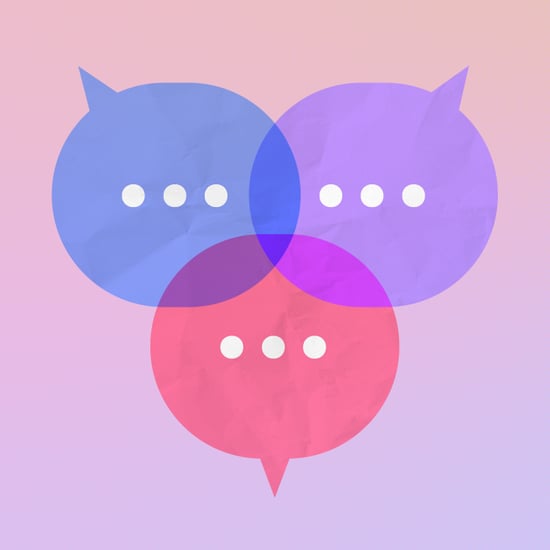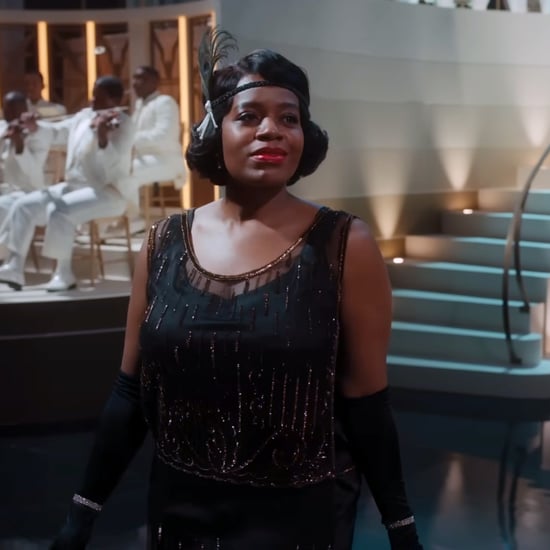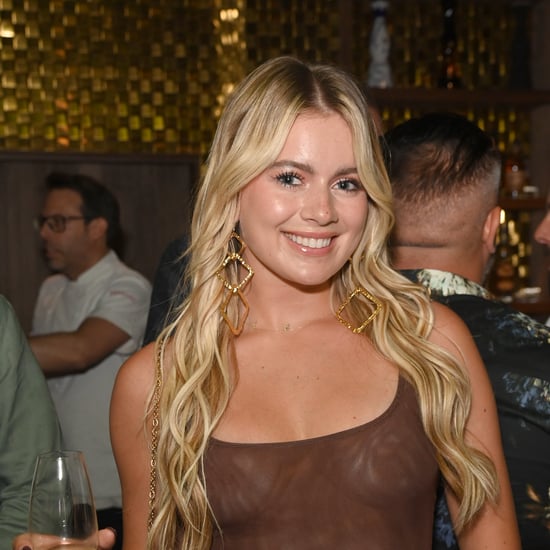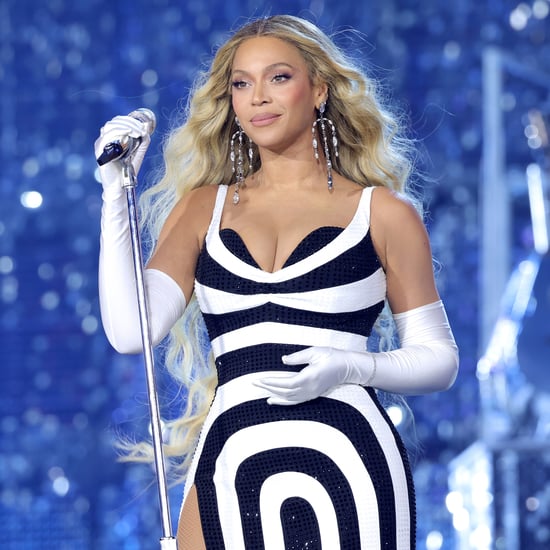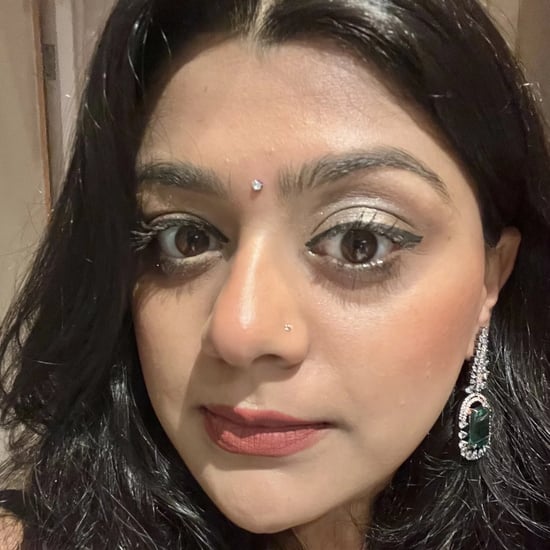What the Hijab Means to Muslim Women in the US and UK
For Muslim Women, Their Relationship to the Hijab Is a Back-and-Forth Conversation
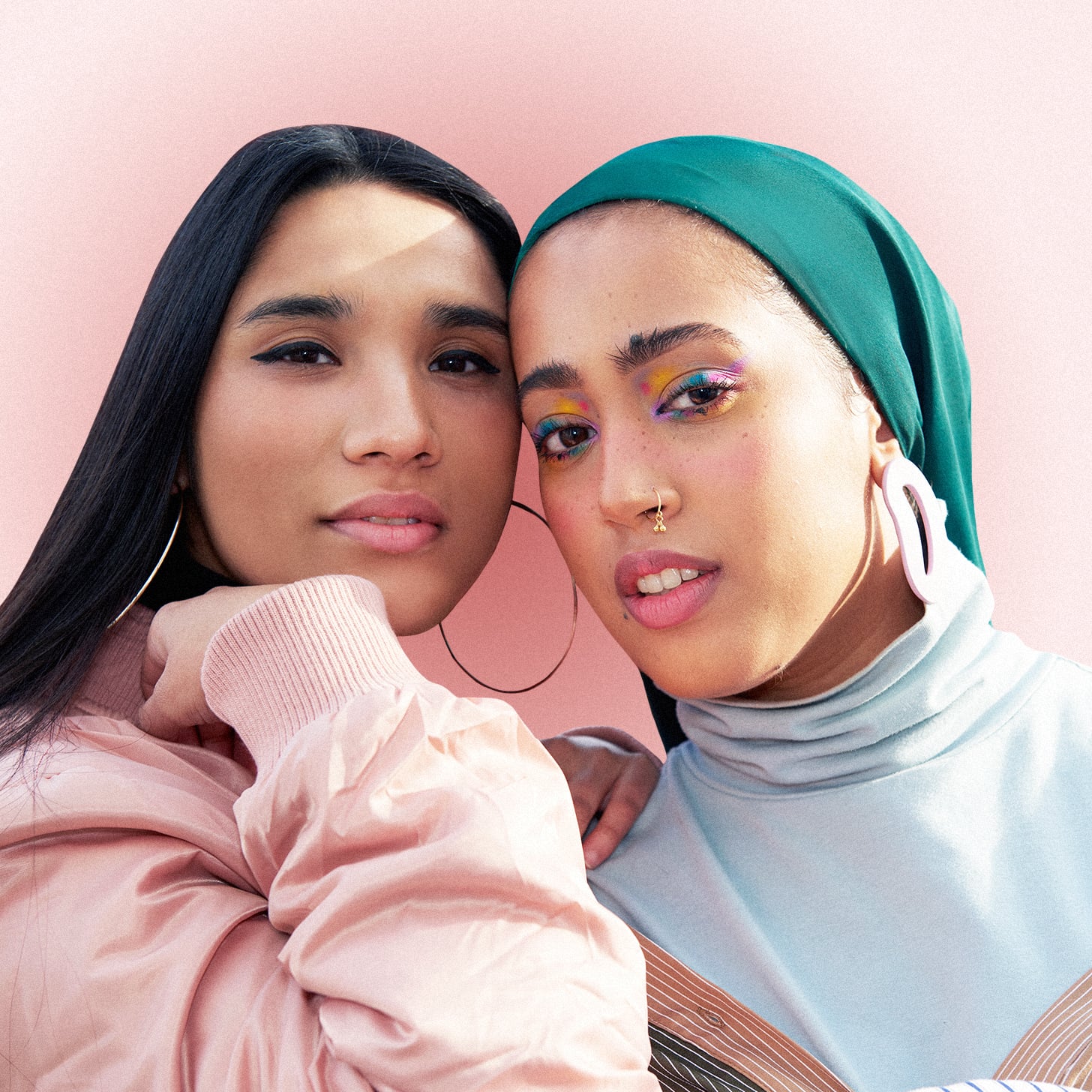
Image Source: Getty / We Are and Illustration by Aly Lim
After the death of 22-year-old Mahsa Amini on 16 Sept., 2022, large-scale protests have taken place in Iran and all over the world. Captured for alleged improper wear of the hijab, the mandatory Islamic headscarf, Amini was removed from her car by the "morality police" (or "Gasht-e-Ershad," which translates to "guidance patrols") and died three days later from severe beating. This unit of the police force was established in 2005 to strictly enforce the Islamic dress code.
Since 1983, the Islamic law states hijabs must be worn by women above the age of puberty in Iran to cover their hair and loose clothing to conceal their silhouettes in public, regardless of religion. Since its inception, and especially in recent years, the Islamic people have been split on this mandate, either following the law as a way to grow deeper in their faith or retaliating against it to protest for one's freedom of choice.
For many Iranian women in the United Kingdom and the United States, the relationship between the hijab and their hair can be a complicated one. One reason could point to the lack of visibility and understanding around the practice, although that's changing. In 2016, for example, fencer Ibtihaj Muhammad became the first American woman to wear a headscarf while competing in the Olympics. In 2019, Rep. Ilhan Omar made history as the first woman to wear a hijab in Congress, breaking a 181-year-old ban preventing anyone from wearing a head covering in the chamber.
What the hijab means to each woman is personal. Sometimes it's rooted in faith, sometimes in politics. Others wear it to honour their parents and elders.
"I used to only wear the hijab publicly on Fridays if I made it to Jummah prayer, promising myself I would commit to daily wearing as soon as I had kids," Um Malik, a California-based mother of four, says. "When that eventually happened and I put it on, it was powerful because it drastically changed my look but still felt like me, with just more pride. It wasn't just putting a hijab on, I was making a statement and deepening my faith."
Like Malik, many shift their relationship with the hijab at a later point in their lives. That was the case with Azaadeh Golshan, a healthcare provider, who started wearing it in February of last year. "Treating sick COVID patients as a respiratory therapist, and losing loved ones to it brought clearer realisations of this Dunya (life) and our roles in it," she says. Now, her headscarf makes her feel empowered and more connected to God. "When I walk out the door wearing a hijab, I know people will look, but I'm not concerned about them — I feel at peace."
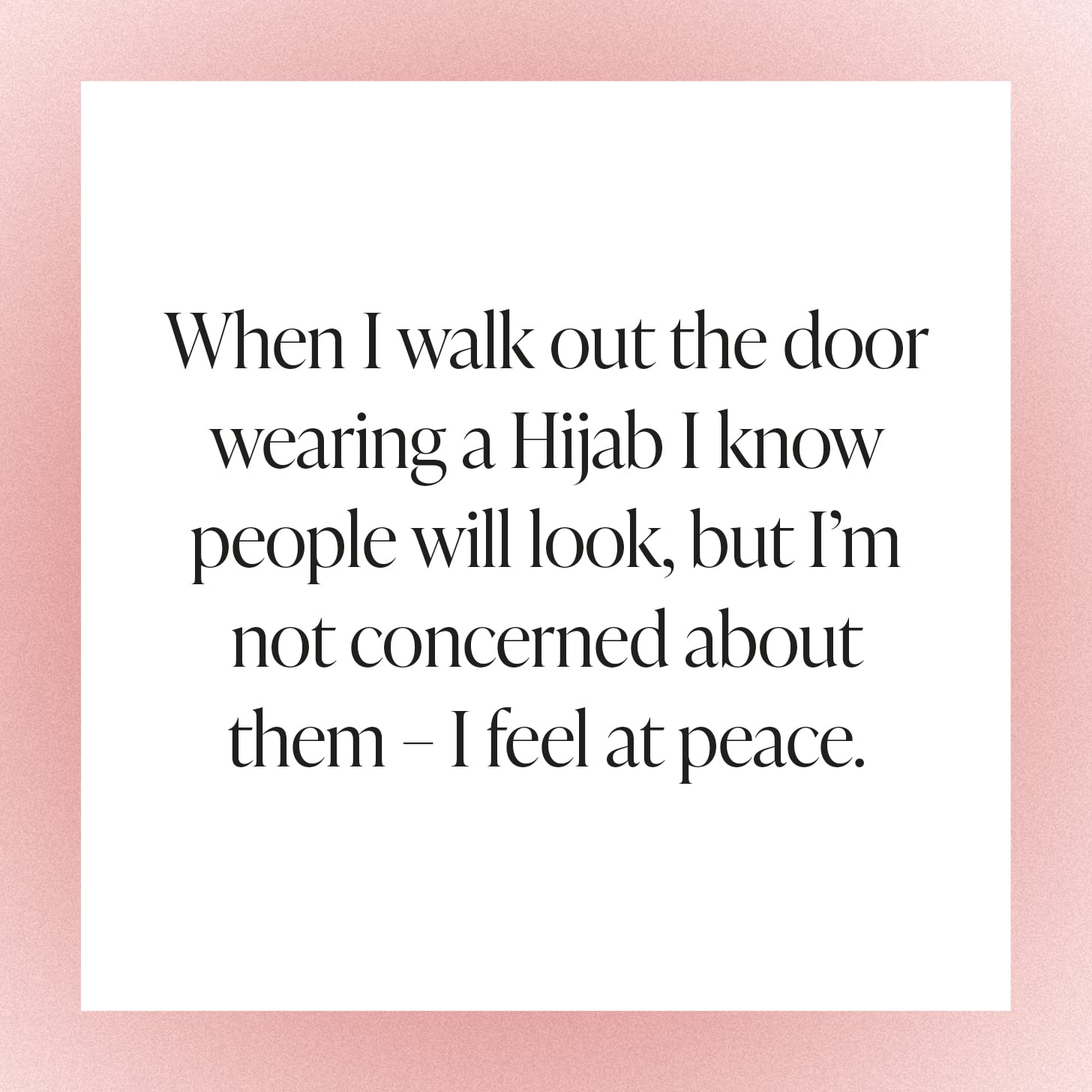 Image Source: Illustration by Aly Lim
Image Source: Illustration by Aly Lim
Lalla Mariah al-Idrissi, a model and actor, started to wear the hijab on and off as a teenager but decided at age 17 to keep it. "I had started praying five times a day consistently and would carry a scarf around with me, so during Ramadan that year, I just decided, why not just keep it on? I'd like to think [the public] view it as a positive statement that I am unapologetically Muslim and proud."
Unfortunately, outsiders don't always view the hijab as a symbol of pride and have instead used it as a means for prejudice. The U.S. in particular has seen countless examples of anti-Muslim bias in the aftermath of the 9/11 attacks that still lingers today. The 2016 U.S. presidential campaigns, when Donald Trump encouraged mosques to shut down and promoted databases that could track Muslim Americans, spread anti-Muslim hostility. Professional fencer Ibtihaj Muhammad has often called out injustices and bias against the hijab.
"Although my elders respect my choice, a lot of people also consider me to be a terrorist," Malik says. "I've never received so much attention from something that is considered unattractive and is supposed to make you unseen."
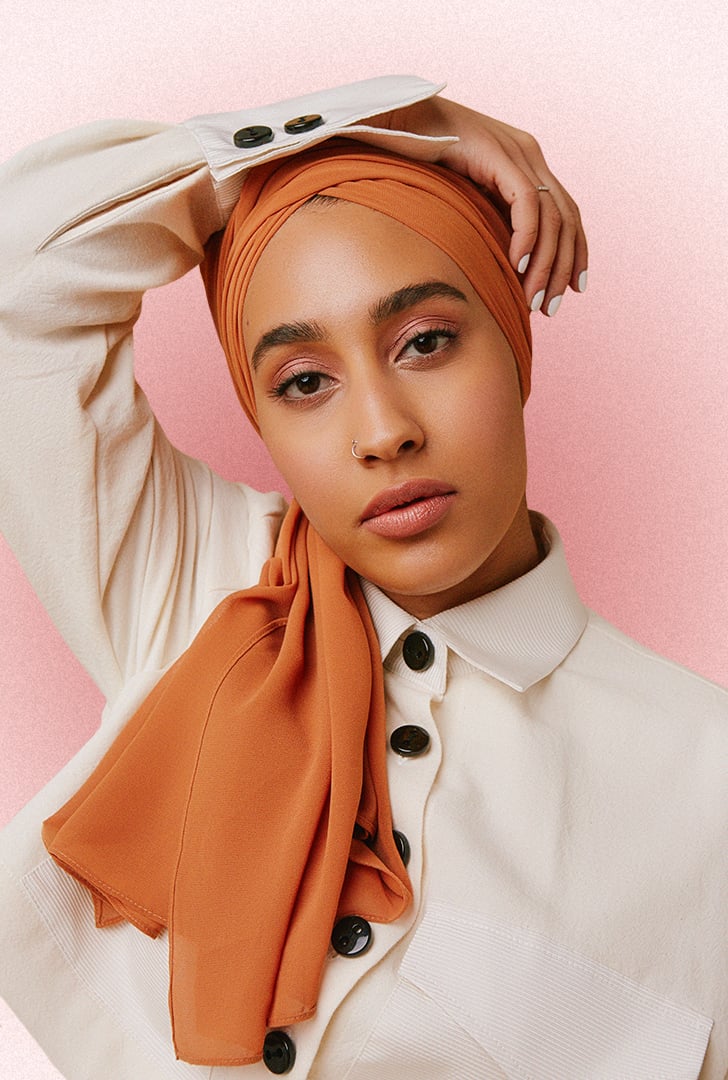 Image Source: Courtesy Lalla Mariah al-Idrissi and Illustration by Aly Lim
Image Source: Courtesy Lalla Mariah al-Idrissi and Illustration by Aly Lim
For some Muslim women, wearing the hijab at puberty is common and out of respect, but their feelings change as they start to grow older. "I started wearing the hijab the summer before my 13th birthday," says journalist Urooba Jamal. "I was following the norms of my immediate family, where wearing hijab and practicing modesty is seen as a commitment to the Islamic faith." Jamal wore the hijab for 10 years, seven of which she was unbothered by the daily ritual, accepting it as part of her identity. As a teenager, she even chronicled her outfits and hijabs on a fashion blog. "I embraced it and incorporated it into my bold, expressive personal style throughout much of my teens."
[The hijab] no longer held any meaning for me and I was tired of being the face of a religion that I had so many doubts about.
When she turned 18 and started college, she began to question her faith and learned more about gender equality. "I struggled to wear a hijab during that time, resented it even, as I was at the outset of my feminist journey, and was angered by all religions in general," Jamal says. Before her final term at age 22, she decided to take off the hijab. "It no longer held any meaning for me and I was tired of being the face of a religion that I had so many doubts about." Still, while she know longer believes in the concept of modesty, she respects any woman's decision to wear it.
Since 2014, Masih Alinejad, an Iranian American journalist, has called on Iranian women to record themselves defying the hijab rule and to send in their proof. With over 8 million followers on Instagram, Twitter, and Facebook, thousands of women have sent Alinejad photos and videos showing their hair in public, cutting it off, and removing their hijab. The movement, although blocked by the country's dictatorship, has encouraged women to stand up for their right of choice. "The hijab is the tool the regime uses to control the women and, through them, Iranian society," Alinejad told The New Yorker.
Just last year, Iranian American and CNN's chief international anchor Christiane Amanpour refused to wear a head covering while interviewing the Iranian president Ebrahim Raisi. Amanpour, who grew up in Tehran, respects the hijab custom in Iran, but lives without covering in America. "Here in New York, or anywhere else outside of Iran, I have never been asked by any Iranian president — and I have interviewed every single one of them since 1995 — either inside or outside of Iran, never been asked to wear a headscarf," Amanpour has said. And because President Raisi required the anchor to be in a hijab as a "matter of respect," referring to the "situation in Iran," she declined the interview.
There are plenty of Islamic citizens making a stance against the mandate as well. In 2016, an app called Gershad launched as a way to help Iranians avoid and be made aware of checkpoints mandated by morality police. In 2017, Alinejad started "white Wendesdays," a day where women would dispose of their headscarves and wear white to protest the hijab mandate. In July 2022, the women led movement, "hijab-bi-hijab," saw women protesting by taking off their hijab in public spaces.
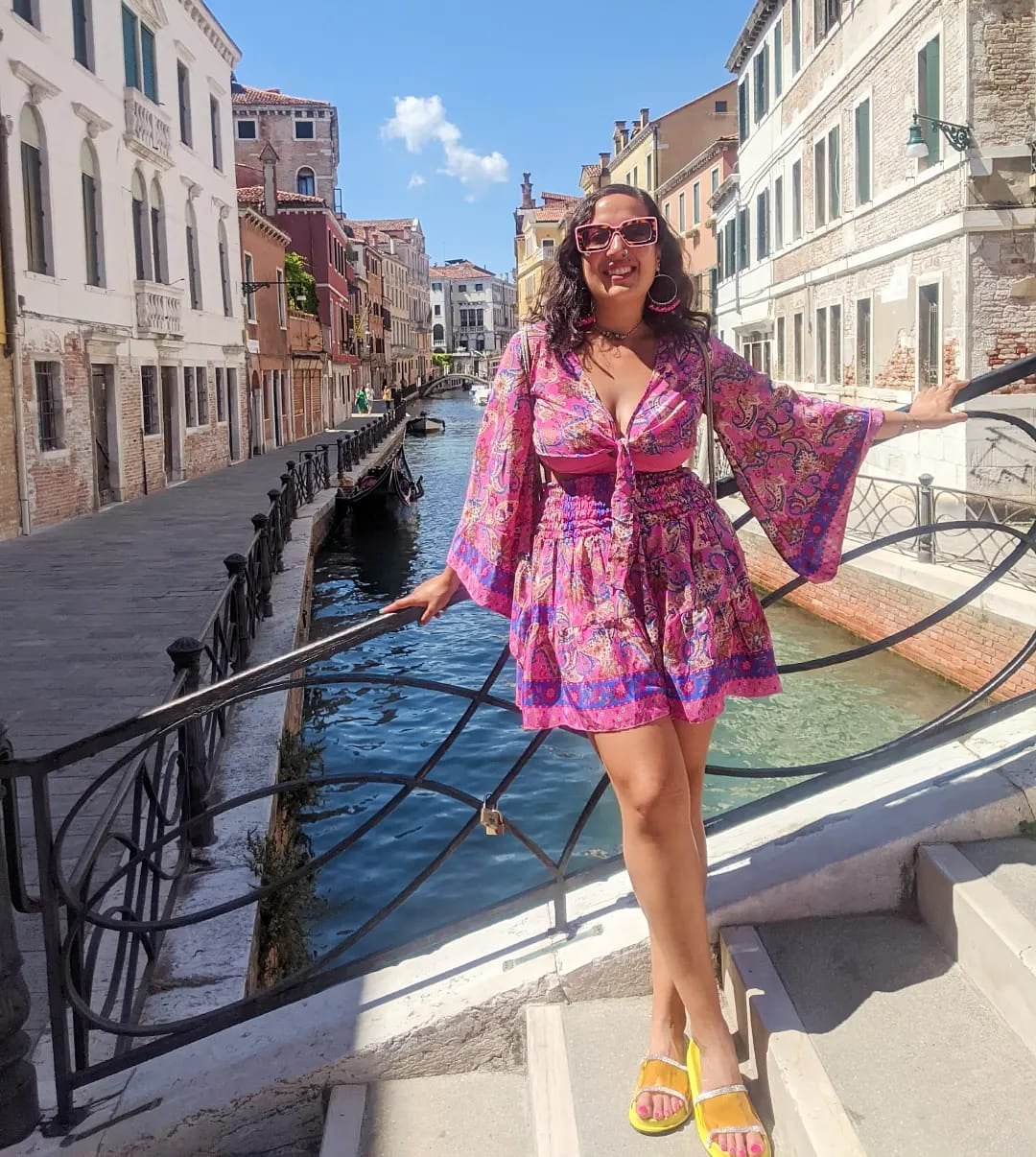
Image Source: Courtesy of Urooba Jamal
Over the last several months, protests have got larger, with women cutting their hair (a sign of beauty forbidden to be seen) and burning their hijabs to express anger toward the morality police responsible for Amini's death, and as a way to reject the aggressive and compulsory policy toward hijabs in Iran. Unfortunately, it is still mandatory and not the owner's choice whether to wear one or not.
In 2019, many Islamic women on #nohijabday expressed how wearing a hijab was open to scrutiny and could influence and justify a man's behaviour toward said women in Iran. Post after post detailed the level of freedom and safety they felt since removing their hijab. Both then and now, there has been both rebellion against government-imposed dress codes as women fight for fundamental human rights and economic reforms as well as a large community supporting wearing the head scarf to express their faith.
"There are always the awkward stare downs [when I wear my hijab], but I see it as a moment for discussion or knowledge to share my why," Golshan says. "I hope that with more dialogue, we all can learn to understand and appreciate each other."
